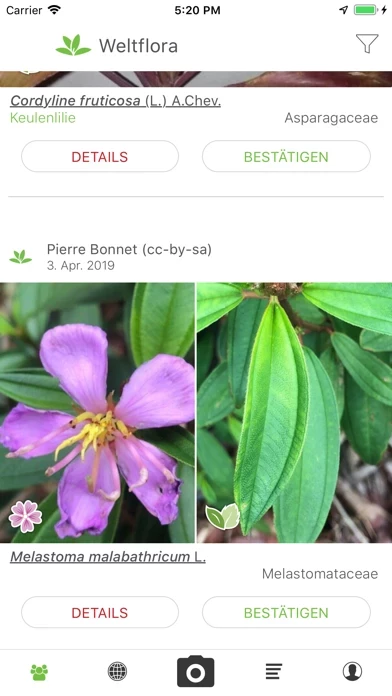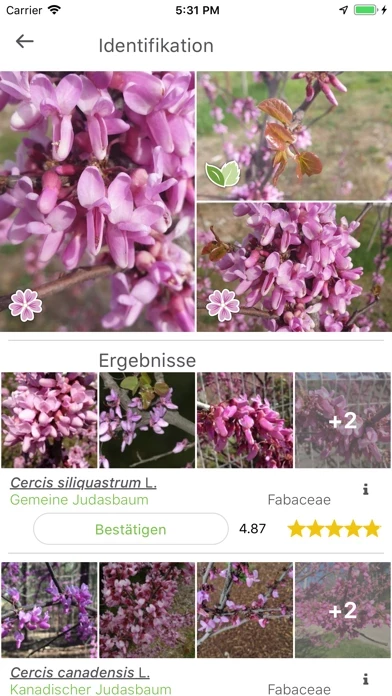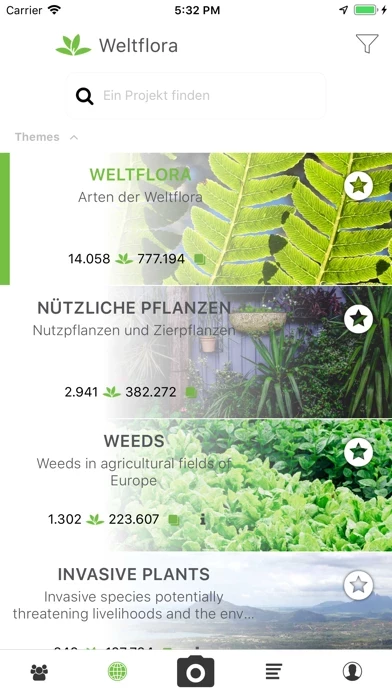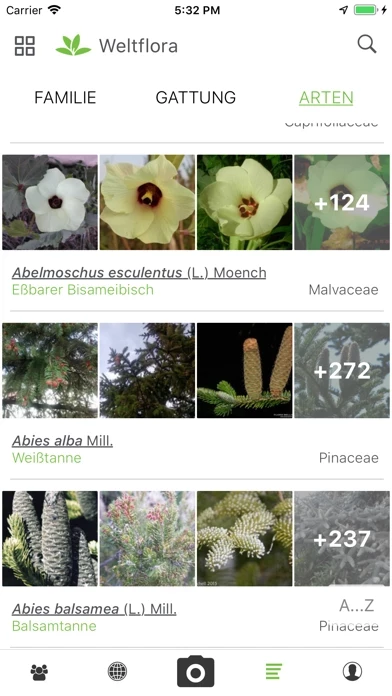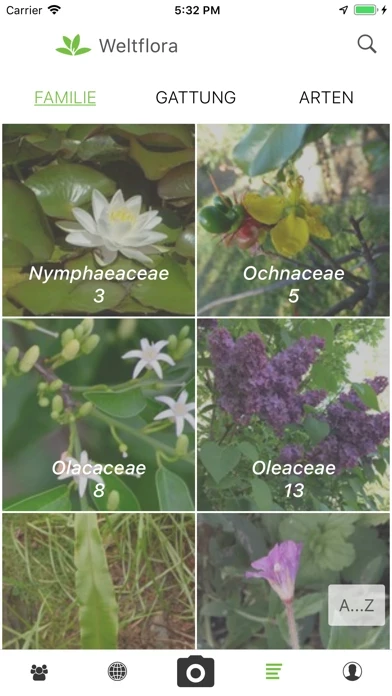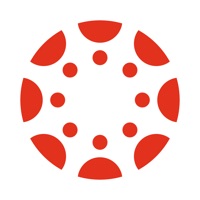PlantNet Overview
What is PlantNet? Pl@ntNet is a mobile application that allows users to identify plants by taking a photo of them. The app is also a citizen science project that collects and analyzes plant data to better understand plant biodiversity and preserve it. The app can identify various types of plants, including wild plants, trees, grasses, ferns, and more. The more visual information provided to the app, the more accurate the identification will be. The app currently recognizes about 20,000 species.
Features
- Plant identification by taking a photo
- Citizen science project to collect and analyze plant data
- Identification of various types of plants, including wild plants, trees, grasses, ferns, and more
- Ability to filter recognized species by genus or family
- Differentiated data revision that gives more weight to skilled users
- Re-identification of shared observations
- Multi-flora identification to search for plants in all floras
- Selection of favorite floras for quick access
- Navigation at different taxonomic levels in image galleries
- Mapping of observations
- Links to many factsheets
- Web version of the app available at https://identify.plantnet.org/
Official Screenshots
PlantNet Pricing Plans
| Duration | Amount (USD) |
|---|---|
| Billed Once | $6.00 |
**Pricing data is based on average subscription prices reported by Justuseapp.com users..
Product Details and Description of
Pl@ntNet is an application that allows you to identify plants simply by photographing them with your smartphone. Very useful when you don't have a botanist on hand! Pl@ntNet is also a great citizen science project: all the plants you photograph are collected and analysed by scientists around the world to better understand the evolution of plant biodiversity and to better preserve it. Pl@ntNet allows you to identify and better understand all kinds of plants living in nature: flowering plants, trees, grasses, conifers, ferns, vines, wild salads or cacti. Pl@ntNet can also identify a large number of cultivated plants (in parks and gardens) but this is not its primary purpose. We especially need Pl@ntNet’s users to inventory the wild plants, those that you can observe in nature of course but also those that grow on the sidewalks of our cities or in the middle of your vegetable garden! The more visual information you give to Pl@ntNet about the plant you are observing, the more accurate the identification will be. There are indeed many plants that look alike from afar and it is sometimes small details that distinguish two species of the same genus. Flowers, fruits and leaves are the most characteristic organs of a species and it is them that should be photographed first. But any other detail can be useful, such as thorns, buds or hair on the stem. A photograph of the whole plant (or the tree if it is one!) is also very useful information, but it is often not sufficient to allow a reliable identification. At present Pl@ntNet makes it possible to recognize about 20,000 species. We are still a long way from the 360,000 species living on earth, but Pl@ntNet is getting richer every day thanks to the contributions of the most experienced users among you. Don't be afraid to contribute yourself! Your observation will be reviewed by the community and may one day join the photo gallery illustrating the species in the application. The new version of Pl@ntNet released in January 2019 includes many improvements and new features: -The ability to filter recognized species by genus or family. -The differentiated data revision that gives more weight to users who have demonstrated the most skills (in particular the number of species observed, validated by the community). -The re-identification of shared observations, whether yours or those of other users of the application. -The multi-flora identification that allows you to search for the photographed plant in all the flora of the application and not only in the one you have selected. Very useful when you are not sure what flora to look for. -The selection of your favorite floras to access them more quickly. -The navigation at different taxonomic levels in image galleries. -The mapping of your observations. -Links to many factsheets. The web version of the application is also available at the following address: https://identify.this app.org/
Top Reviews
By jandlplus7
So helpful for plant ID!
I think this app is wonderful! It takes a picture and immediately gets the identification, complete with scientific classification. Use this app almost daily to see exactly what this beautiful nature is named and have been learning so much! I use it both outside and inside on my houseplants! And I feel it gets better and better as I’ve used it!
By Rose of Texas.
Pl@ntnet
Having had moved from northern Utah to Monterey California a few months ago I have been very frustrated trying to learn the names of all of these plants and trees that are new to me being able to click and get an answer instantly is just fabulous and they’ve been spot on correct every time plus it’s free can’t go wrong
By mahapr
Fantastic free plant identification app!
This is a fantastic free plant identification app, and also a great citizen science project. It works very well for me and seems to reliably provide very useful information. Before buying any of the various commercial apps, check this one out. I found it super helpful, and I couldn’t refrain from contributing my own observations.

